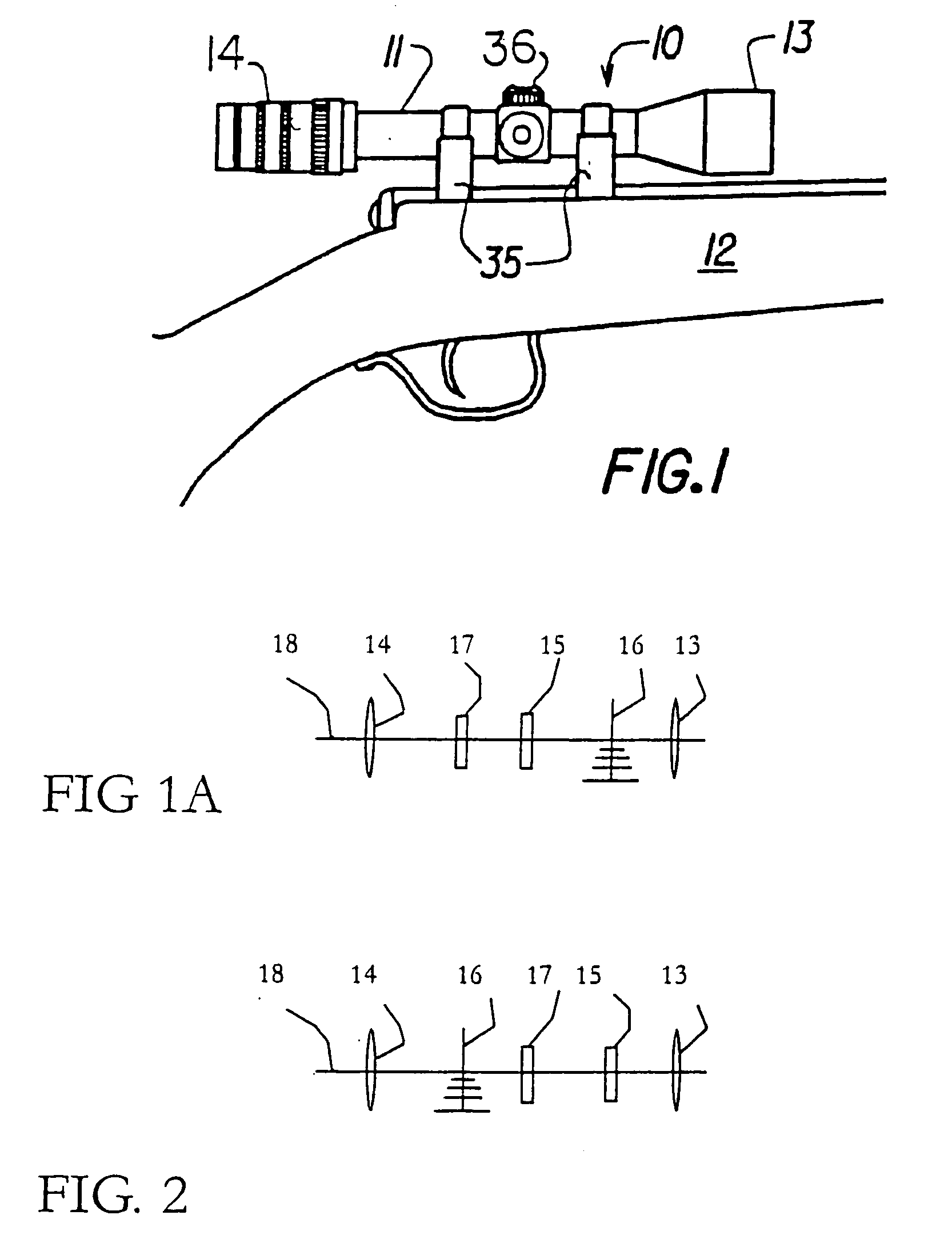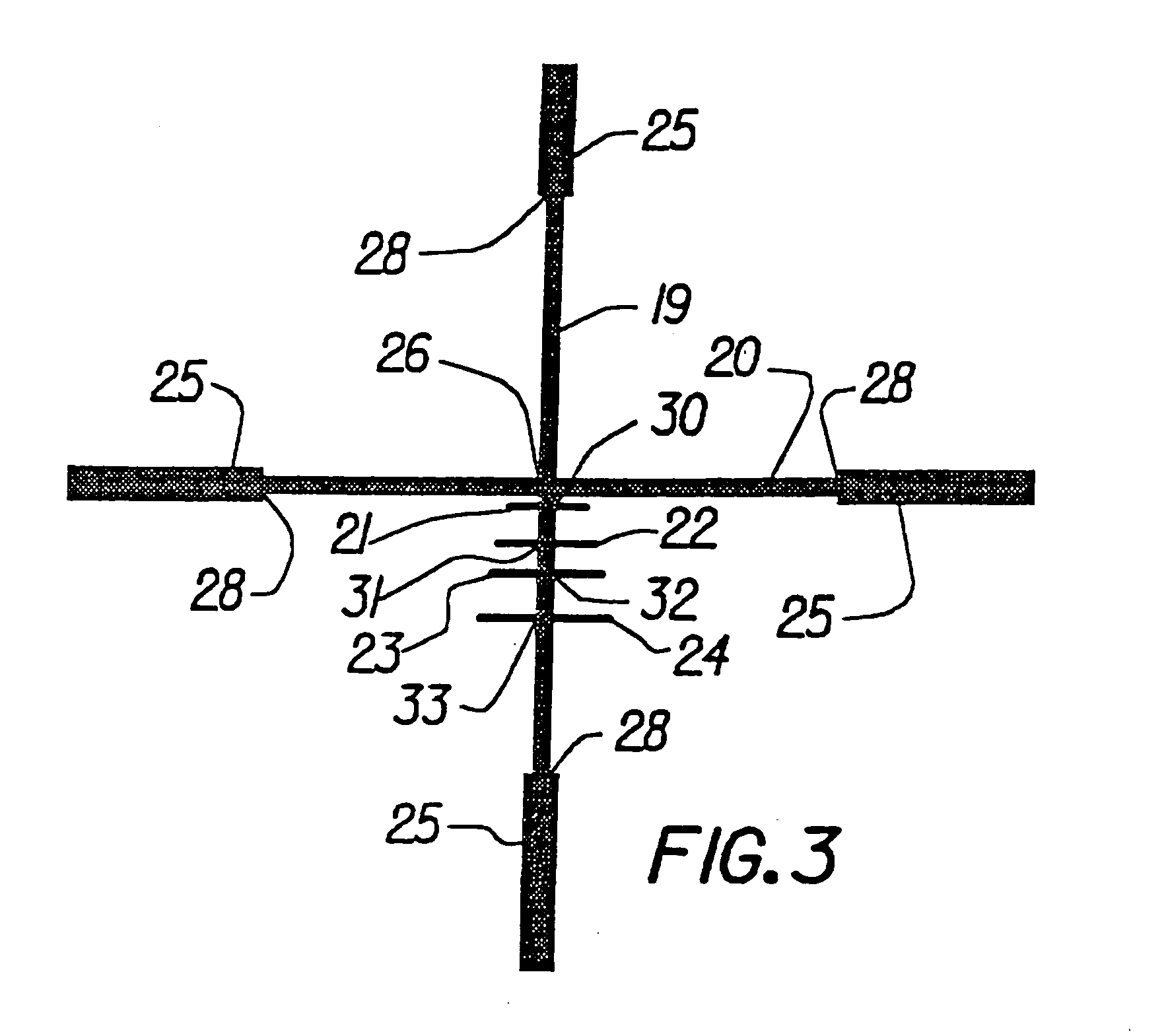Reticle for telescopic gunsight and method for using
a technology of telescopic gunsights and reticles, which is applied in the field of reticles for telescopic gunsights and methods for using, can solve the problems of difficult or slow use of scopes, limited usefulness of telescopic sights disclosed in the aforementioned prior art patents, and complex mental or physical manipulation, etc., and achieves simple and fast mental work, accurate and effective method of aiming rifles
- Summary
- Abstract
- Description
- Claims
- Application Information
AI Technical Summary
Benefits of technology
Problems solved by technology
Method used
Image
Examples
Embodiment Construction
(for the purposes of clarification only)
[0055] Referring to FIGS. 1-3, a telescopic sight 10, embodying this invention is shown attached by a suitable mount 35 to a gun 12. The sight 10 is formed by a tubular housing 11 containing a forwardly positioned objective lens element 13, a rearwardly positioned ocular or eyepiece lens element 14, an intervening erector lens element 15, and a reticle 16 disposed between the objective lens element 13 and the erector lens element 15. In the case of vari-focal or zoom scopes, a positionally adjustable magnifying lens 17 is associated with the erector lens element 15. The exterior of the housing 11 may be equipped with rotationally moveable features 36 for adjusting focus, parallax, magnification ratio, windage and elevation. Each of the various lens elements may be single lenses or combinations of lenses, either aligned in proximity or glued together or a combination of these compositions.
[0056] The reticle 16 is a circular, planar or flat tra...
PUM
 Login to View More
Login to View More Abstract
Description
Claims
Application Information
 Login to View More
Login to View More - R&D
- Intellectual Property
- Life Sciences
- Materials
- Tech Scout
- Unparalleled Data Quality
- Higher Quality Content
- 60% Fewer Hallucinations
Browse by: Latest US Patents, China's latest patents, Technical Efficacy Thesaurus, Application Domain, Technology Topic, Popular Technical Reports.
© 2025 PatSnap. All rights reserved.Legal|Privacy policy|Modern Slavery Act Transparency Statement|Sitemap|About US| Contact US: help@patsnap.com



